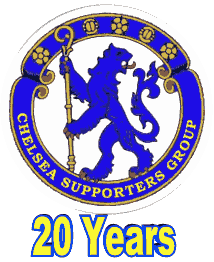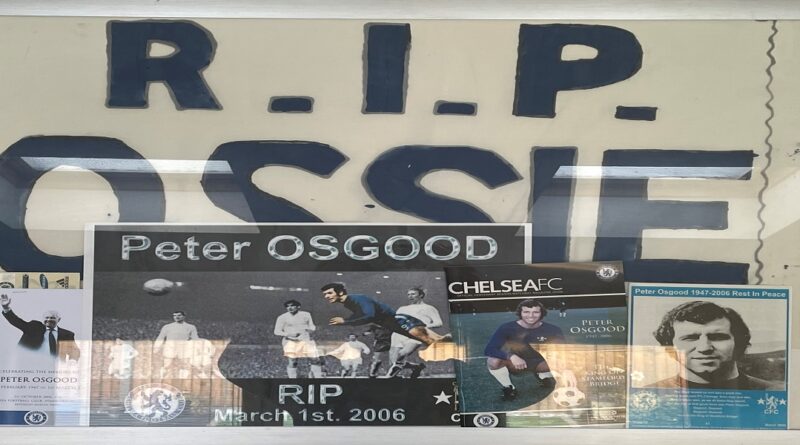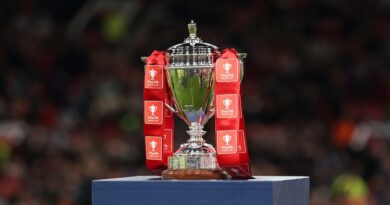Remembering the Osgood and Hutchinson Blues brotherhood
From the official Chelsea FC website:
On this, the anniversary of the passing in 2006 of Peter Osgood, the King of Stamford Bridge, we revisit an important part of Ossie’s Chelsea’s story – the partnership he formed upfront which is one of the most famous strike pairings in the club’s history.
We lost Peter at the age of just 59 but his legend remains. It is a tale enhanced by the damage he did to opposition teams alongside Ian Hutchinson. Their time together at the spearhead of Dave Sexton’s successful side of the late 1960s and early 1970s is celebrated in this article, first published in the Chelsea magazine in 2018…
Perfect partners – Ossie & Hutch
Most great strike pairings follow a similar trend: one superstar, the headline-grabbing favourite of the supporters, deployed in tandem with a less glamorous foil who excels in the nitty-gritty side of the game to bring the best out of their partner.
Typically, these contrasting styles don’t lend themselves to a perfect marriage off the field, a prime example of which would perhaps be Kerry Dixon and David Speedie. Their idea of becoming acquainted with one another was by throwing tea cups in one memorable dressing-room dust up, though things mellowed after that incident.
The same certainly could not be said about Peter Osgood and Ian Hutchinson, who fired Chelsea to FA Cup glory for the first time in the club’s history following an epic, brutal final against Leeds United in 1970.
‘He was my best mate,’ Osgood once said. ‘We called each other bruv and that’s what we were like – brothers. I wouldn’t have swapped him for anyone in the league.’
Ossie, of course, was the golden boy of Stamford Bridge, destined for the top from his very first appearance for the club, on trial for the juniors, when he was hauled off at half-time and implored to sign on the dotted line immediately for fear of other clubs swooping to sign this most prodigious of talents.
At the opposite end of the scale was Hutchinson, who proved to be a feather in the cap for the scouting department and manager Dave Sexton, plucked from Cambridge United in 1968 at the age of 20 for £5,000 as one to be filed under the “work in progress” category.
Osgood recalls Hutch’s early training sessions with the quip that Sexton had paid about £4,995 too much for his services! The general consensus among the Blues squad was that they had bought a dud and that this former full-back was not cut out for the role of leading the line for a club expected to challenge for major honours.
What he lacked in technical ability, though, he more than made up for in bravery, and with one of the brightest coaches in the history of English football to shape him, Hutchinson quickly earned the respect of his team-mates and became a regular fixture in the side – but not, it may surprise you to learn, alongside Osgood.
Having started life in the Chelsea first team as a centre-forward whose eye-catching technique was allied with blistering speed, by the time Hutch signed for the club the King of Stamford Bridge was reinventing himself after a year out of the game as a result of a horrific leg break suffered at the hands of Blackpool’s Emlyn Hughes.
The pictures tell a story of a skinny, lanky kid transforming into a powerful man, who could now look after himself against the ankle assassins he found himself up against on the mud patches passed off as football pitches. The touch remained, but gone was that turn of pace which would show a defender a clean pair of heels.
He spent much of Hutchinson’s first season at the club playing as a No.4, perhaps as much as a result of this change as Sexton’s necessity for a ball player in the middle of the park to complement the hard-working John Hollins, with Charlie Cooke having struggled to replace Terry Venables as the midfield general. The emergence of Alan Hudson, the most local of Chelsea boys who could match Ossie for talent on the ball and also had the pace and power to ghost past players, solved that problem – as well as providing the manager with the perfect solution in his attacking formation.
‘Hollins was a gritty player and Hudson was very skilful,’ said John Dempsey, who played at centre-back in that team. ‘Peter Houseman and Cooke on the wings were both excellent crossers of the ball, which suited Osgood and Hutchinson because they were both so good in the air. We could go from 4-2-4 when attacking to a 4-4-2 when the opposition had the ball, and the flexibility was all down to how the midfield was set up.’
It was on a trip to Hillsborough on Saturday 8 November 1969, with a mounting injury list, that Sexton first trialled this line-up, with Ossie and Hutch leading the line – and the result was spectacular.
‘I have seen all the top clubs this season and I’ve seen nothing as exciting as this Chelsea display,’ was the view of one newspaper hack the following day, while another claimed Sheffield Wednesday ‘simply could not contain Osgood and Hutchinson’.
Both men were on target in a 3-1 victory, Hutch helping himself to a brace, and so began a beautiful partnership.
As Osgood noted, the dynamics of the duo suited him down to the ground – he had previously played his best football at Chelsea while operating just off the main frontman, who was George Graham. Now he was back as the secondary target behind the main focal point, although this time it was a centre-forward who was the bravest of the lot, capable of taking punishment from the bruising defenders of the era.
‘I wouldn’t have swapped him for anybody – he was awesome,’ noted Osgood years later. ‘He came here at 22 and packed up at 27, breaking every bone in his body! To play up front with him, and with Charlie, Huddy and Houseman knocking the balls in, they couldn’t stop us.’
The stats back up Osgood, as he and Hutchinson went on to score regularly throughout that magical campaign. A few weeks later, Desmond Hackett described Hutch as ‘the soccer find of 1969’ after he had scored twice more in another 3-1 win, this time over Southampton, as Chelsea surged up the table.
The league title was surely out of reach, though, after a disappointing start to the campaign, but there was genuine belief the FA Cup could be heading to Stamford Bridge for the first time.
Birmingham City were beaten 3-0 in the third round with Hutch scoring two and Ossie the other, and a goal apiece bookended a 4-1 victory over Crystal Palace in round five, although Eagles boss Bert Head felt both men were guilty of foul play. That, however, was a big part of their partnership – the dalliance with the dark arts and ability to mix it with the best, or perhaps worst, of them.
The devastating duo were both on target in the semi-finals, too, and by this stage Osgood had found the back of the net in every round as Chelsea prepared to meet Leeds United at Wembley Stadium as underdogs.
Though he failed to add to his goal tally at the home of English football, the Blues lived to see a replay thanks to a late equaliser from Hutchinson, a goal which exemplified everything that he was about. The big centre-forward put his head in where it hurt to meet a cross and place a perfect header past Gary Sprake, earning Chelsea a 2-2 draw we had scarcely deserved.
‘Most people probably wouldn’t have thrown themselves at it, they’d have been a bit dubious about spoiling their looks,’ said captain Ron Harris. ‘Hutch didn’t have to worry about that, though!’
It was a far from uncommon sight to see him putting his own safety to one side for the benefit of the team.
‘If you look back over that season, I must have scored eight to 10 similar goals,’ said Hutch. ‘Houseman or Hollins knew it was their job to deliver the ball either to the near or far post. Ossie tended to go far as he didn’t like the studs up his arse! We scored a hell of a lot of goals that way and it was just short of programmed into us from the training ground, really.’
In the replay up at Old Trafford, both men were protagonists in the game’s big moments, but there was one moment which perhaps summed up their partnership better than any other. After Billy Bremner had left one on Osgood and got up for some afters, Hutchinson was straight on the scene to send the Scot flying with a shove.
Of course, what we all remember was Ossie’s beautiful diving header – which Hutch was involved in the build-up of, dragging a defender out of position to leave the space for his strike partner – and the huge long throw from Hutchinson, his trademark move which all the kids in the playground attempted to copy, that led to David Webb heading home the winning goal in extra time. Chelsea, finally, had won the FA Cup.
Osgood had provided 31 goals across all competitions that season, along with 22 from Hutchinson. With the two of them in tandem and the rest of the puzzle coming together behind them, it should have been the catalyst for a title challenge, but that was as good as it got for the two of them.
Though the King continued to bang the goals in regularly, Hutch struggled desperately with injury and regularly went under the surgeon’s knife, his bravery finally catching up with him, and we had already seen the best of this perfect partnership in just one season.
Ossie headed for pastures new in 1974, his deteriorating relationship with Sexton beyond repair – ironically, the manager had felt he could learn a lot from his strike partner in terms of attitude and desire. That brought to an end his partnership, at least on the pitch, with Hutchinson, who remained at Chelsea for a further two years before his litany of injuries finally ended his brave football career.
Their friendship endured, though, and they were back in unison in retirement as they partnered up in a surrounding equally as comfortable to them as a football pitch: the pub. The Union Inn in Windsor launched Ossie and Hutch MkII and the roles remained the same, as Osgood took on the glamorous position behind the bar while Hutchinson put his culinary skills to good use in the kitchen.
Hutch was even best man at all three of Osgood’s weddings, and he began a relationship with Elaine Thatcher, the best friend of his mate’s third wife, Lynn! On or off the pitch, it’s clear this truly was a perfect partnership.
‘Chelsea Supporters Group’ can also be found on Twitter and Facebook




